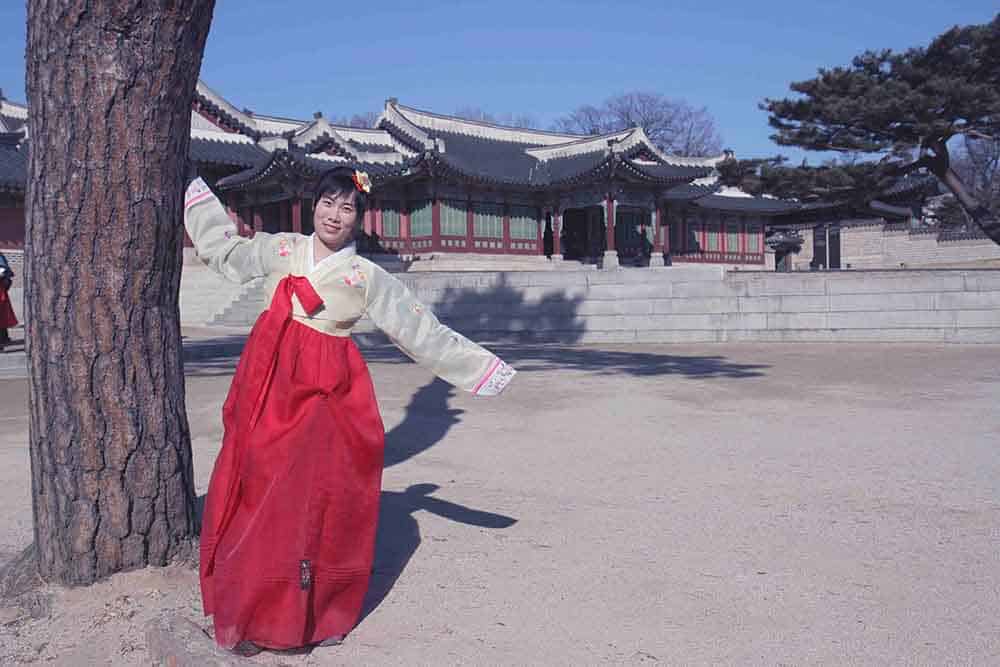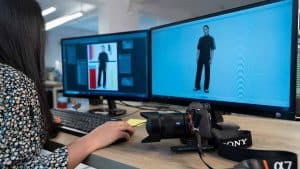Are you a photographer looking to take your images to the next level? Have you ever wanted to make a dull photo pop with vibrant colors? Then color correction may be the answer to your problems! In this ultimate guide, we will explore what color correction is and how it can be used to enhance your photography. We will look at the various tools used to correct color in a photo, as well as discuss tips and tricks for making your images look their best. If you’re ready to take your photos up a notch, read on to find out more about color correction!


What is Color Correction?
Color correction is a powerful tool for photographers to create stunning images. It involves adjusting the colors in an image to bring out the desired tones and shades. It can be used to make a dull image pop with vibrant colors, or to bring out subtle nuances in a photo that might otherwise have been overlooked. Color correction can also be used to fix color casts (where a certain color dominates an image) and make colors in the photo match those of the original scene.
To achieve accurate color correction, photographers need to be familiar with the different tools and techniques such as curves, levels, and hue/saturation adjustments. These tools allow photographers to make precise adjustments to the tones and colors in an image, as well as correct any color casts that may be present. Photographers also need to know how to use white balance to accurately adjust the colors in an image. By using these tools, photographers can create beautiful images that accurately convey their subject matter.
Tools for Color Correction
Color correction is a key component of photography, and having the right tools is essential. Color correction tools can help you enhance the natural colors of your images, as well as correct any color distortions that may have occurred while capturing the photo. Common tools used for color correction include Color Balance, Levels, Curves, and Selective Color. Color Balance adjusts the intensity of a specific color or color range, while Levels adjusts the overall brightness and contrast of an image. Curves provides more comprehensive control over image tonality, and Selective Color allows for individual color control.
In addition to these specific tools, there are also numerous software programs available specifically for color correction. Programs such as Adobe Photoshop, Lightroom, and Capture One Pro offer comprehensive color correction features, allowing users to fine-tune images to perfection. For those who do not want to invest in a professional grade program, there are plenty of free and budget-friendly options available, such as GIMP and PicMonkey.
No matter which tools you choose to use, color correction can make a huge difference in the quality of your photos. With the right tools and techniques, you can improve the vibrancy, contrast, and clarity of any photo. So if you’re looking to up your photography game, dive into the world of color correction and see what a difference it can make!
Understanding Color Spaces
Understanding color spaces is a key part of color correction. Color spaces are numerical representations of color in a digital image which provide a basis for comparing and adjusting colors. To properly adjust colors in an image, the color space must be taken into account. The most widely used color space is sRGB, which is the default color space used by digital cameras and computers. Other color spaces such as Adobe RGB and ProPhoto RGB are often used by professional photographers as they provide a larger range of colors.
By understanding the different color spaces and how they work, photographers can better utilize color correction tools to adjust colors in an image. With the right knowledge and tools, photographers can create images that are vibrant, vibrant, and look their absolute best. With color correction, photographers can tweak colors to achieve the desired look and feel, making the image even more eye-catching. Whether you’re an amateur or a professional, having a good understanding of color spaces can be hugely beneficial when it comes to color correction and enhancing your photography.
Working with Levels and Curves
Working with levels and curves is an important part of color correction. By adjusting the levels and curves of an image, you can enhance the contrast, brightness, and color balance of the photo. The Levels tool allows you to adjust the distribution of tones in your photo, while the Curves tool can be used to adjust the brightness and contrast of specific areas of the image.
When using Levels and Curves, it is important to pay careful attention to the histogram. A histogram is a graphical representation of the pixels in an image, and it can be used to identify any areas that may need adjustment. For example, you may notice areas that are too light or too dark, or you may find that the colors are not balanced properly. By looking at the histogram and making small adjustments in Levels and Curves, you can make subtle changes that will have a big impact on the overall quality of the photo.
By understanding levels and curves, you can take your photos to the next level. With careful attention to the histogram and some practice, you can make adjustments that will result in beautiful, vibrant images. Color correction is an essential skill for any photographer, and working with levels and curves is an important part of the process.
Adjust Color Balance
Color correction is an important part of a photographer’s workflow. It is the process of adjusting the colors in an image to improve its overall appearance and aesthetic. Color correction can be used to enhance or change the overall mood of an image or to match the colors of a specific brand. Color correction can be achieved through the use of various tools, such as curves, levels, hue/saturation, and selective color.
By adjusting the curves, levels, and hue/saturation, a photographer can enhance the contrast and vibrancy of an image. With curves and levels, a photographer can adjust the brightness and contrast of an image to create a more dramatic effect. The hue/saturation tool allows a photographer to adjust the saturation, hue, and luminosity of an image, which can be used to create a more vibrant look. Lastly, the selective color tool can be used to adjust the colors of specific objects in an image, such as changing the color of a flower or sky.
When using color correction, it is important to keep an eye on the overall color balance of the image. This can be done by adjusting the white balance of the image, which can be achieved with the help of a color wheel. A color wheel can help a photographer adjust the hue, saturation, and luminosity of an image to create a more balanced look. Additionally, it is important to use color correction sparingly, as too much adjustment can make an image look unnatural. Taking the time to carefully adjust the colors in an image can make a huge difference in the overall look and feel of a photo.

Matching Colors Across Images
Color correction is an important element of photography that can really make your images look their best. It involves adjusting colors in a photo to match the colors in the original scene or to make them look more vivid. Color correction can be used to make colors in a photo look more accurate and lifelike, or to create a more dramatic effect.
There are several tools and techniques used to match colors across images. One common method is to utilize a color wheel, which allows you to compare colors in two different images and adjust them accordingly. Color wheels are especially helpful for matching colors across photos of different times of day or in different light conditions. Another tool used for color correction is color channels, which allow you to adjust the individual colors in an image and make more subtle changes. The curves tool is also a great way to adjust colors in a photo to create a specific look.
Finally, there are some easy tips and tricks that can be used to improve the colors in a photo without the need for any special tools. For example, you can use a white balance filter to help adjust colors across photos taken under different lighting conditions. Additionally, you can use curves or other color adjustments to make colors appear more vibrant or muted. With a little bit of practice, color correction can help make your photos look amazing.
Retouching Skin Tones
Color correction is an essential part of any photographer’s workflow. It is a process of manipulating and adjusting the colors of an image to make it look more pleasing. One of the most common uses of color correction is to correct skin tones. Skin tones tend to be difficult to photograph accurately, as different skin tones are affected by different lighting and color temperatures. To make sure skin tones look natural, color correction should be used. This can be done by adjusting the brightness, contrast, whites, blacks, and other color channels to get the desired effect. Another technique to correct skin tones is to use the Spot Healing Brush or the Healing Brush Tool in Photoshop. This tool allows the photographer to brush over a troublesome area and match the color of the surrounding area for a more natural looking result.
In addition to adjusting the color of an image, color correction can also be used to make an image look more vibrant. By adjusting the saturation, vibrance, and other color channels, the photographer can make an image pop with vivid colors. By using a combination of these techniques, color correction can drastically improve the overall look and feel of an image. With a few simple steps, anyone can take their photos to the next level and make their shots more eye-catching and professional.
Color Grading
Color correction is the process of enhancing the appearance of a photograph by adjusting its colors. This technique can be used to improve the contrast and saturation of colors in a photograph, as well as to correct any color casts or white balance errors. Color correction can also be used to match colors between two images or create a specific color palette for a photo.
Using specialized software, photographers can take advantage of a range of tools to make color corrections. These include curves, levels, and hue/saturation controls, which can be used to adjust the brightness, contrast, and color of an image. Color graders can also use tools such as RGB Balance, Color Balance, and Color Wheels to make more precise color adjustments. By using these tools, photographers can make sure the colors in their photographs look natural and true to the original scene.
In addition to the software tools, photographers can also use physical lighting, gels, and filters to affect the colors of a photograph. By using these physical methods, photographers can create more subtle and effective color corrections. With the right tools and techniques, photographers can create stunning photographs that have vibrant and accurate colors.
Tips and Tricks for Color Correction
Color correction is an essential technique for any photographer looking to take their images to the next level. It can be used to bring out the best colors in a photo and make dull images pop with vibrant hues. In this ultimate guide, we will explore the various tools used to correct color, as well as provide tips and tricks for getting the most out of color correction.
One of the most important tips to remember when it comes to color correction is to start by adjusting the white balance. This will ensure that the colors in your image are accurate and that the entire image has a consistent feel to it. To do this, you can use the white balance sliders or presets in your editing software. After you have adjusted the white balance, you can then move onto color curves, which will allow you to selectively adjust the brightness and contrast of each color in the image. Finally, you can use a hue and saturation adjustment to tweak the colors in the image and make them look more vibrant.
In addition to these basic color adjustments, there are plenty of other helpful tips and tricks to help you get the most out of color correction. For example, you can use the “split-tone” effect to add a specific hue to the shadows and highlights of an image, or use a vignette to draw attention to the center of the image. You can also experiment with other color effects, such as sepia or black and white, to create a unique look. By mastering the techniques of color correction, you can take your photos to the next level and make them stand out from the rest.
Troubleshooting Color Correction Issues
Color correction is a powerful tool for photographers to make their images look their best. It allows for subtle adjustments to be made to the colors in a photo to make them look more vibrant and lifelike. Color correction can be done manually, using basic adjustments such as exposure and white balance, or more advanced adjustments such as curves and selective color. By making small adjustments to the colors in a photo, you can bring out the best in it and take your images to the next level.
When troubleshooting color correction issues, it’s important to remember that sometimes the simplest fixes are the best. Common issues such as incorrect white balance, over-saturation, over-exposure, or incorrect color temperature can all be easily corrected with basic tools. If you’re having trouble achieving the desired results, try making subtle adjustments one at a time until you get the look you want. Color correction can be a delicate process, so it’s important to remember that sometimes less is more. With patience and practice, you can master color correction and take your photography to the next level.
Final Thoughts on Color Correction
Color correction is a powerful tool for photographers who want to take their images to the next level. It is an important part of the creative process, allowing photographers to manipulate the color of an image in order to achieve the desired effect. There are many tools available to help photographers with color correction, from basic color balance adjustments to more sophisticated color grading techniques. Color correction can be used to fix color casts, adjust the brightness and contrast, or even match the color of one image to another.
When it comes to color correction, the most important thing to remember is to take your time and experiment. You can always undo any changes you make, so don’t be afraid to try new things. With a little practice and patience, you can quickly master the art of color correction and take your images to the next level. Utilizing color correction in your workflow can help transform your images from dull to vibrant, and open up new possibilities in your photography.
With Stencil Bangladesh, by your side, you won’t regret your choice and the result will be as neat and catchy as possible always. At Stencil Bangladesh, our number one priority is to provide a variable collection of image editing services for both e-commerce businesses and companies.
For more inquiries, visit our website at Stencil Bangladesh or mail us at info@stencilbangladesh.com.







